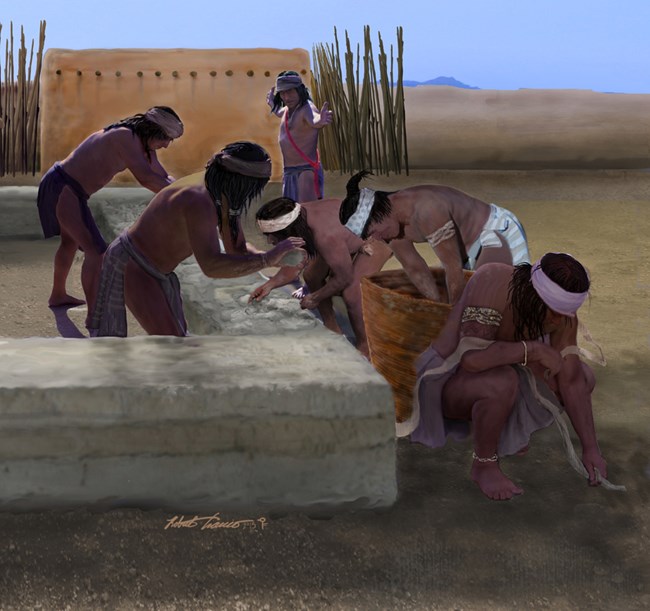
Commissioned art with restricted use Picture the effort and skills needed to build something the size of the Casa Grande without modern power tools, wheels, beasts of burden, or support frames. The Ancestral Sonoran Desert People used caliche, a desert soil rich in calcium carbonate, to raise the thick walls you see here. Caliche was dug and mixed with water in shallow pits to form a stiff concrete-like material. They shaped the mud by hand to form the walls up to the heights you see. Look closely at these walls. Can you see horizontal lines? Those lines show "courses," the height a batch of caliche was piled in one work session before being left to dry. After a course dried out, the workers laid down a fresh batch of caliche mud on top. These builders' ingenuity and knowledge of local soils made it possible to construct a building that has lasted more than seven centuries. Were there others like this? Other Great Houses were found along the Gila River and in the Phoenix Basin. Archeologists believe another structure like the Casa Grande existed at the site of Pueblo Grande, an archeological park in Phoenix. Today, the Casa Grande remains the only example of a multi-story structure from the Hohokam culture. A PDF of the wayside (9,644 KB) is available
|
Last updated: April 6, 2020
